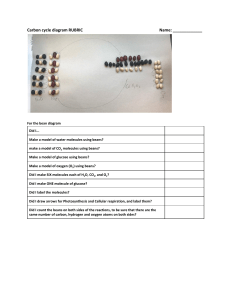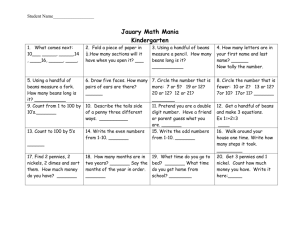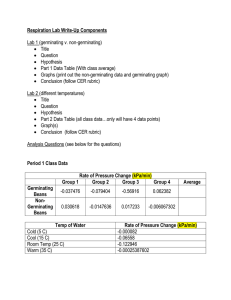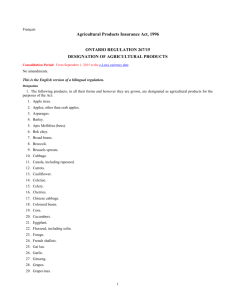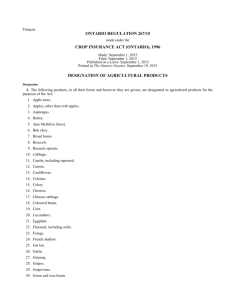2007 Biology I Midterm Study Guide
advertisement
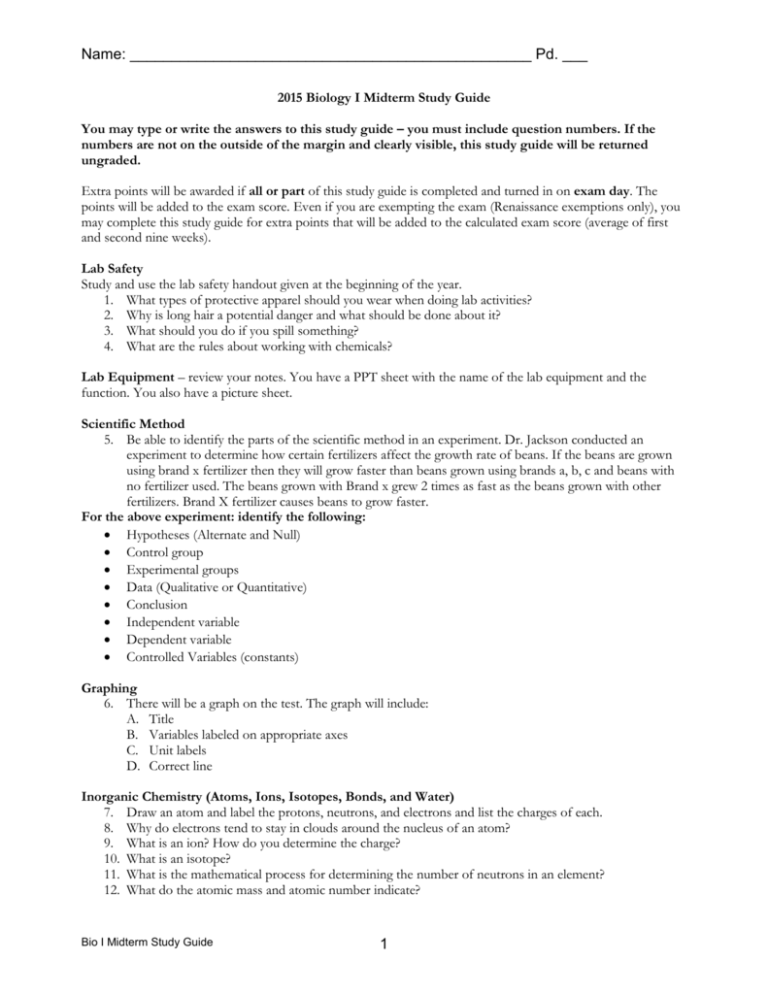
Name: ________________________________________________ Pd. ___ 2015 Biology I Midterm Study Guide You may type or write the answers to this study guide – you must include question numbers. If the numbers are not on the outside of the margin and clearly visible, this study guide will be returned ungraded. Extra points will be awarded if all or part of this study guide is completed and turned in on exam day. The points will be added to the exam score. Even if you are exempting the exam (Renaissance exemptions only), you may complete this study guide for extra points that will be added to the calculated exam score (average of first and second nine weeks). Lab Safety Study and use the lab safety handout given at the beginning of the year. 1. What types of protective apparel should you wear when doing lab activities? 2. Why is long hair a potential danger and what should be done about it? 3. What should you do if you spill something? 4. What are the rules about working with chemicals? Lab Equipment – review your notes. You have a PPT sheet with the name of the lab equipment and the function. You also have a picture sheet. Scientific Method 5. Be able to identify the parts of the scientific method in an experiment. Dr. Jackson conducted an experiment to determine how certain fertilizers affect the growth rate of beans. If the beans are grown using brand x fertilizer then they will grow faster than beans grown using brands a, b, c and beans with no fertilizer used. The beans grown with Brand x grew 2 times as fast as the beans grown with other fertilizers. Brand X fertilizer causes beans to grow faster. For the above experiment: identify the following: Hypotheses (Alternate and Null) Control group Experimental groups Data (Qualitative or Quantitative) Conclusion Independent variable Dependent variable Controlled Variables (constants) Graphing 6. There will be a graph on the test. The graph will include: A. Title B. Variables labeled on appropriate axes C. Unit labels D. Correct line Inorganic Chemistry (Atoms, Ions, Isotopes, Bonds, and Water) 7. Draw an atom and label the protons, neutrons, and electrons and list the charges of each. 8. Why do electrons tend to stay in clouds around the nucleus of an atom? 9. What is an ion? How do you determine the charge? 10. What is an isotope? 11. What is the mathematical process for determining the number of neutrons in an element? 12. What do the atomic mass and atomic number indicate? Bio I Midterm Study Guide 1 Name: ________________________________________________ Pd. ___ 13. 14. 15. 16. 17. Define covalent, ionic and hydrogen bond. What is the pH scale? What are the pH ranges for acids and bases? How is pH important to organisms? List and describe the properties of water. Organic Chemistry (Carbon and Macromolecules) 18. What is an organic compound? 19. Describe the function of the four macromolecules: carbohydrates, lipids, proteins, and nucleic acids. 20. What element forms the backbone of the 4 macromolecules listed above? 21. Who discovered the structure of DNA? 22. What is the function of DNA? 23. What is an enzyme and what does it do? 24. Draw an enzyme-substrate complex. Label the parts (substrate, enzyme, active site). Cells (Organelles and Transport) 25. List the parts of the cell theory. 26. Compare and contrast prokaryotes and eukaryotes. 27. Write a brief description of the main organelles (Nucleus, mitochondria, chloroplast, ribosome, and cell/plasma membrane). 28. What types of materials must pass into and out of a cell? 29. What is the characteristic of the plasma membrane that allows some materials to pass through and not others? 30. Define passive transport and explain the 3 types of passive transport. 31. Define active transport and explain the types of active transport. 32. What are hypertonic, hypotonic, and isotonic solutions? Draw a diagram of each. Photosynthesis and Cellular Respiration 33. What are autotrophs? 34. Describe the two types of autotrophs. 35. What are heterotrophs? 36. Briefly describe the two main reactions of photosynthesis (include the locations). 37. Briefly describe the main parts of cellular respiration (Glycolysis, Kreb’s, Electron transport.) and include locations. 38. Describe fermentation and list both types. 39. Compare and Contrast photosynthesis and cellular respiration. Include the equations in your answer. Ecosystem Energy Dynamics 40. List and define the levels of organization. 41. Define biotic and abiotic factors. 42. Define biodiversity. 43. What is a keystone species? 44. Define producer, autotroph, consumer, and heterotroph. 45. Define herbivore, carnivore, omnivore, detritivore, and decomposer. 46. What is a trophic level? 47. What is the difference in a food chain and a food web? 48. What is an energy pyramid? 49. If the producer level contains a biomass of 30,000 kilocalories, then how much energy is available at each subsequent level as it moves up the pyramid? 50. Be able to label or recognize the processes in the biogeochemical cycles. Bio I Midterm Study Guide 2
